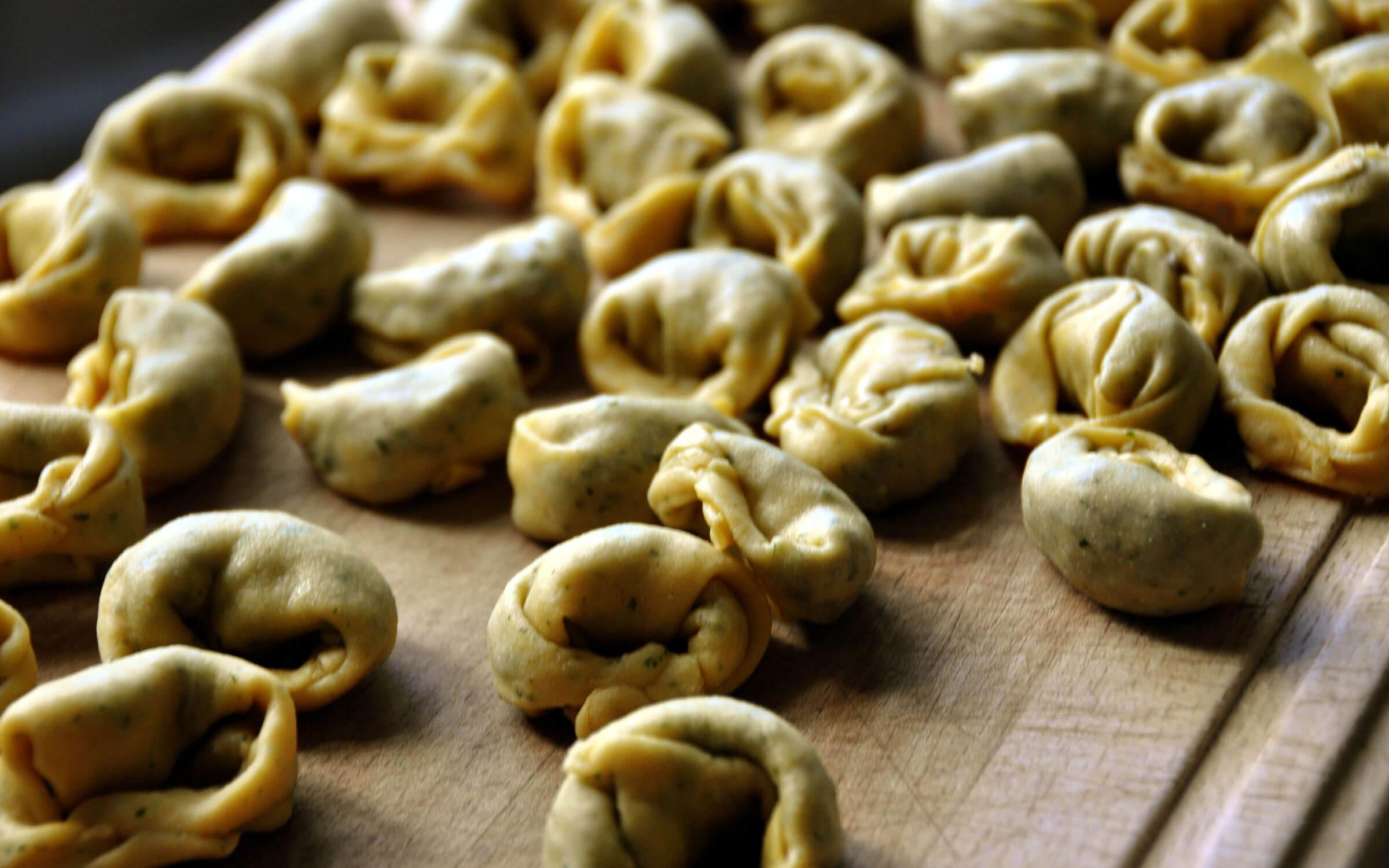Every third Tuesday in June, a 600-metre-long table is set up on the Visconti Bridge in Valeggio and some 3,500 guests delight in the taste of a handkerchief with a knot.
Well, not literally. But every Italian town seems to have a little piece of history that shapes its identity and distinguishes it from its neighbours—and because this is Italy, often these tales have a culinary twist. In the case of tortellini di Valeggio, this culinary treasure can be traced to a handkerchief.
Tortellini di Valeggio: Born of Love
Like so many stories in Italy’s history, the origin of tortellini di Valeggio is, in fact, a love story. In the late 14th century, during one of his numerous campaigns in northern Italy, the mighty Count Gian Galeazzi Visconti set his camp at Valeggio, on the shore of the Mincio River. (The Visconti bridge was built at his behest and named for him.) In the evening around the fire, the buffoon Gonella told the tale of beautiful nymphs cloaked as witches, who supposedly live in the waters of the Mincio. They come out only at night and disappear with the first beams of sunlight.

That evening, the story goes, a horde of witches came to haunt the sleeping soldiers. Only Captain Malco, a man known for his courage, dared to confront them. Chasing the ugly creatures, he managed to capture one of them. Removing her cloak, he recognized her true nature. The nymph’s name was Sylvia, and they fell madly in love. However, at sunrise, the beauty had to go back to the riverbed. But as a record of their eternal love, she left a silk handkerchief with a knot for her Captain.
The next day, a group of young ladies danced to entertain the Count Visconti and his cousin, Isabella. Malco recognized Silvia, his nymph, in one of the dancers and reached for her as Isabella, who was secretly in love with the Captain, saw through the game the two were playing. She denounced Sylvia as a witch, and Count Visconti ordered her to be burned. Malco fiercely fought against his own troops, thus allowing Silvia to flee towards the river Mincio. She disappeared, and as Malco lost sight of his beloved, he finally surrendered.

